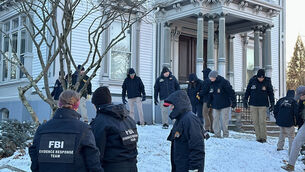Second blast rocks nuclear reactor
A second hydrogen explosion in three days rocked a Japanese nuclear reactor today and fuel rods were left dangerously exposed at another unit as authorities worked to avert any catastrophic release of radiation in the tsunami zone.
The cascading troubles at the Fukushima Dai-ichi complex were set in motion when last Friday’s quake and tsunami in Japan’s north east knocked out power, crippling the cooling systems needed to keep nuclear fuel from going into full meltdown even weeks after a reactor shuts down.
International scientists said there are serious dangers but not at the level of the 1986 blast in Chernobyl. Japanese authorities were injecting seawater as a coolant of last resort, and advising nearby residents to stay inside to avoid contamination.
The accidents so far – injuring 15 workers and military personnel and exposing up to 190 people to elevated radiation – have compounded the immense challenges faced by the Tokyo government as it struggles to help hundreds of thousands of people affected by twin disasters that flattened entire communities and may have left more than 10,000 dead.
Japanese authorities said there have been no large-scale radiation releases, but have detected temporary elevations in levels, and have evacuated 185,000 people from around affected reactors. Prevailing winds were pointing out to sea, and US ships assisting tsunami recovery moved further way to avoid potential danger.
A senior Japanese official said the fuel rods in all three of the operational reactors at the Fukushima Dai-ichi plant appeared to be melting.
“Although we cannot directly check it, it’s highly likely happening,” Chief Cabinet Secretary Yukio Edano told reporters.
A hydrogen explosion today at the plant’s Unit 3 reactor injured seven workers and four members of the defence forces, and followed a similar one on Saturday at Unit 1 that injured four workers, but officials were most worried about the precipitous drop in water levels at Unit 2.
The water levels were restored after exposing fuel rods in the reactor twice and were falling a third time, increasing the risk of a worst-case scenario involving a full meltdown with the uranium core eating through a reactor’s steel-reinforced containment vessel and causing a wide release of dangerous radiation.
A pressure release valve for Unit 2’s reactor containment vessel failed to open, hindering efforts to keep water flowing into the chamber, nuclear agency official Naoki Kumagai said. Officials are considering spraying water directly over the steel-reinforced chamber, he said.
The head of the International Atomic Energy Agency said the Japanese government has asked the agency to send experts to help.
“Units 1 and 3 are at least somewhat stabilised for the time being,” said Nuclear and Industrial Safety Agency official Ryohei Shiomi. “Unit 2 now requires all our effort and attention.”
The blast at Unit 3 actually lessened pressure building inside the troubled reactor, and officials said the all-important containment shell – thick concrete armour around the reactor – had not been damaged. In addition, officials said radiation levels remained within legal limits, though anyone left within 12 miles of the scene was ordered to remain indoors.
“We have no evidence of harmful radiation exposure,” deputy Cabinet secretary Noriyuki Shikata told reporters.
Donald Olander, professor emeritus of nuclear engineering at the University of California at Berkeley, said having uranium fuel rods exposed was a crucial problem. Water is what keeps them from getting too hot, melting and burning their casing and melting the uranium fuel pellets inside.
He calculated that each of the three reactors at risk probably require 50 gallons a minute of new water being pumped in to cool down the enormous heat involved.
The more time that passes with the reactor containment vessels intact, the less the chance of a catastrophe because “nuclear decay” lessens some of the enormous heat in the reactor, said James Stubbins, head of nuclear engineering at University of Illinois.
“They’re doing a good job of containing what might be melting,” he said.
Three nuclear reactor complexes in Japan’s north east were declared emergencies after they were damaged in Friday’s quake and tsunami, raising questions about the safety of such plants in coastal areas near fault lines and adding to global jitters over the construction of new plants. But most of the focus in Japan’s deepening nuclear crisis has been over the Dai-ichi complex.
The hydrogen explosions at that plant’s Unit 1 and Unit 3 were sparked when operators vented steam containing hydrogen to relieve pressure in the containment vessels.
Operators knew that would potentially lead to an explosion – but felt they had no choice if they wanted to avoid complete meltdowns. Eventually, hydrogen in the released steam mixed with oxygen in the atmosphere and set off the two blasts.
Japan’s meteorological agency reported one good sign. It said the prevailing wind in the area of the stricken plant was heading east into the Pacific, which would help carry away any radiation.














